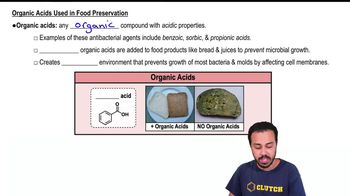Gastric ulcers are caused by
a. stomach acid.
b. H. pylori.
c. spicy food.
d. acidic food.
e. stress.
 Verified step by step guidance
Verified step by step guidance



Gastric ulcers are caused by
a. stomach acid.
b. H. pylori.
c. spicy food.
d. acidic food.
e. stress.
Microscopic examination of a patient’s fecal culture shows comma-shaped bacteria. These bacteria require 2-4% NaCl to grow. The bacteria probably belong to the genus
a. Campylobacter.
b. Escherichia.
c. Salmonella.
d. Shigella.
e. Vibrio.
Explain how the following diseases differ and how they are similar: giardiasis, amebic dysentery, cyclosporiasis, and cryptosporidiosis.
Use the following choices to answer questions 7–10:
a. Campylobacter
b. Cryptosporidium
c. Escherichia
d. Salmonella
e. Trichinella
Identification is based on the observation of oocysts in feces.
Use the following choices to answer questions 7–10:
a. Campylobacter
b. Cryptosporidium
c. Escherichia
d. Salmonella
e. Trichinella
A characteristic disease symptom caused by this microorganism is swelling around the eyes.
Look at life cycle diagrams for human tapeworm and trichinellosis. Indicate stages in the life cycles that could be easily broken to prevent these diseases.